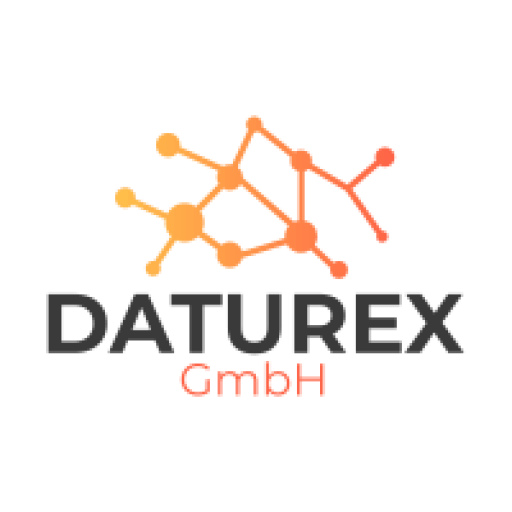In the world of digital development, the headless Content management system is becoming increasingly important. It is revolutionizing the way in which content is created, managed and provided. Through its API-centered architecture it offers developers a high degree of Flexibility and control.
A headless CMS separates the backend from the frontend and thus enables a centralized Content management. This is particularly beneficial for complex digital projects such as websites, e-commerce platforms and mobile apps. The technology is also suitable for innovative applications in the field of augmented and virtual reality.
The future of content management lies in scalability and Technology independence. Developers benefit from the ability to use content across different channels and easily integrate new platforms. This makes the headless CMS a powerful tool for modern digital strategies.
Important findings
- Headless CMS separates backend and frontend
- Enables centralized Content management
- Offers Flexibility for various digital projects
- Supports multichannel publishing
- Promotes scalability and Technology independence
What is a headless CMS?
A headless CMS revolutionizes the Content management. It is a system that provides content without a dedicated front end. This enables flexible use on different platforms.
Definition and basic concept
The headless CMS stores and manages content centrally. It makes this available via APIs without tying it to a specific presentation layer. This promotes the Backend-frontend separation and enables a wide range of applications.
Difference to traditional CMS
In contrast to conventional systems, a headless CMS offers more freedom in terms of content output. It enables use on various devices - from websites and apps to smart devices. This Flexibility makes it a future-proof solution for companies.
API-centered architecture
The heart of a headless CMS is its API-first architecture. APIs enable seamless communication between different systems. This facilitates integration with other technologies and supports efficient Multi-channel publishing.
| Feature | Traditional CMS | Headless CMS |
|---|---|---|
| Front end | Permanently integrated | Flexible |
| Content output | Primary Web | Multi-channel |
| Developer freedom | Restricted | High |
| Scalability | Limited | High |
| API focus | Low | Central |
The development of the headless CMS was driven by the mobile revolution and the advent of JavaScript. It offers advantages such as the integration of different technologies and adaptation to changing customer expectations. For developers, this means more freedom and customization options when designing digital experiences.
Advantages of headless CMS for developers
Headless CMS offer developers numerous advantages that make their work more efficient and flexible. The Developer friendliness of these systems can be seen in various aspects.
One of the main advantages is the Technology independence. Developers are free to choose which frameworks and programming languages they want to use for the front end. This allows creative freedom and optimal adaptation to project requirements.
The flexibility of headless CMS is also reflected in its scalability. Growing requirements can be easily managed as content is managed centrally and delivered via APIs.
The separation of content and presentation improves performance. Content is delivered directly to endpoints, resulting in lower server load and faster loading times.
The simple integration of new channels is another plus point. All content can be managed in one place and distributed across different channels. This reduces the administrative effort and increases the consistency of the content.
| Advantage | Description |
|---|---|
| Technology independence | Free choice of frameworks and programming languages |
| Scalability | Easy adaptation to growing requirements |
| Improved performance | Lower server load and faster loading times |
| Cross-channel integration | Central management and distribution of content |
Despite these advantages, there are challenges. The technical complexity can increase in order to guarantee the desired presentation and functionality. For content editors, the decoupled structure can be difficult at first.
Flexibility and scalability in content management
Headless CMS is revolutionizing the way companies manage and distribute their content. This innovative technology enables flexible and scalable content management that is ideally suited to today's digital landscape.
Cross-platform content usage
A key advantage of headless CMS is the ability to Multi-channel publishing. Content is created once and managed centrally before being played out to various front-ends via APIs. This supports effective Omnichannel strategy and enables companies to reach their target groups via various platforms.
Easy integration of new channels
The flexibility of Headless CMS is particularly evident in the easy integration of new channels. Whether websites, mobile apps or IoT devices - the system adapts easily. This adaptability makes the Headless CMS an ideal Content Hub for future-oriented companies.
Adaptability to future technologies
Looking to the future, headless CMS offer unrivaled adaptability. They enable companies to react quickly to new technologies and output channels without having to completely rebuild their existing infrastructure. This future-proofing is a key factor in the success of long-term digital strategies.
Flexibility and Making headless CMS scalable the ideal choice for modern websites and web projects based on JavaScript frameworks such as React, Vue.js or Angular.
Backend-frontend decoupling: More freedom for developers
The decoupling of backend and frontend in the headless CMS opens up new possibilities for developers. This architecture offers an impressive Development flexibilitywhich is becoming increasingly important in modern web development. According to current statistics, 64% of companies are already using a headless approach, while 90% are planning to evaluate it.
This separation allows developers to freely choose which Frontend frameworks you want to use. Whether React, Angular or Vue.js - the decision is entirely up to them. This freedom makes it possible to develop customized solutions that are perfectly tailored to the project requirements.

Another advantage is the simple integration of Microservices and external data sources. Thanks to the API interfaces, various services can be easily integrated. This significantly increases the scalability and adaptability of the applications.
Companies such as the National Rugby League and Electrolux use Headless CMS to manage content across multiple websites, apps and digital displays. This demonstrates the trend towards centralized content management while maintaining flexibility in output.
Headless CMS allows us to create our content once and use it on all channels. This saves time and ensures consistency.
The backend-frontend decoupling also promotes the specialization of the development teams. Front-end developers can concentrate fully on the user interface, while back-end developers optimize data management. This focus often leads to faster time-to-market and higher product quality.
Headless CMS: Flexibility and control for developers
Headless CMS offer developers maximum flexibility and control. This modern architecture makes it possible to create customized solutions that are precisely tailored to the needs of the project.
Technology independence
A major advantage of headless CMS is its technology independence. Developers are free to choose which programming languages and frameworks they want to use. This makes it easier to recruit specialists, as no specific CMS knowledge is required.
Improved performance and security
The separation of backend and frontend enables efficient Performance optimization. Websites based on the JAMstack principle load significantly faster than conventional CMS solutions. In addition, headless CMS offer advanced security options such as data encryption and support compliance with data protection guidelines.
Customized development environments
With Headless CMS, developers can tailor their environments precisely to the project requirements. The API-centered architecture enables flexible integration and the creation of robust, networked systems.
| Aspect | Traditional CMS | Headless CMS |
|---|---|---|
| Developer control | Limited by CMS structure | Full control over the front end |
| Performance optimization | Often restricted | High flexibility |
| Security improvement | Standard functions | Advanced options |
By using headless CMS, developers can create innovative solutions that are both powerful and future-proof. The combination of Developer control, Performance optimization and Security improvement makes Headless CMS an attractive option for modern web projects.
Multi-channel publishing with Headless CMS
Headless CMS revolutionize the Content distribution in the digital age. They enable efficient Omnichannel marketing-strategy by managing content centrally and distributing it via various channels. This ensures Cross-channel consistency and significantly improves the customer experience.

The benefits of this technology are impressive. According to a Statista survey, 44,59% of website operators personalize their online presence. Headless CMS support this trend by providing customized content for different platforms. Whether website, mobile app or IoT device - the content remains consistent and up-to-date.
Another plus point is speed. Traditional CMSs often deliver unused parts of the code, which affects loading times. Headless CMS, on the other hand, optimize the frontend independently of the backend and thus noticeably improve performance.
Thanks to the API-based provision of content, a headless CMS guarantees seamless and uniform content output across all platforms.
Developers benefit from the flexibility to create optimal displays for any format. Be it through responsive designsnative app development or cross-platform solutions. Real-time updates ensure that all channels always display the latest content. Analysis tools help to monitor and optimize content performance across all channels.
Headless CMS therefore offer a powerful solution for modern, cross-channel content strategies. They increase efficiency in content management and ensure consistency - a must for successful content management. Omnichannel marketing in today's digital landscape.
Content modeling in Headless CMS
The Content modeling plays a central role in headless CMS systems. It enables flexible and efficient management of content for different output channels.
Structured data for flexible output
In Headless CMS, content is stored as Structured data saved. This allows format-neutral creation and supports flexible output on different platforms. Developers can therefore easily adapt content to different end devices.
Define content types and relationships
An important aspect of the Content modeling is the definition of content types and their relationships. Developers define which data fields a content type contains and how they are linked to each other. This creates a clear structure and makes it easier to manage complex content.
Reusability of content
The structured data management in Headless CMS promotes the Content reuse. Once content has been created, it can be used in different contexts and on different channels. This saves time when creating content and ensures a consistent presentation across all platforms.
The Content modeling in Headless CMS offers developers and content managers great flexibility. It not only supports efficient content creation, but also SEO optimization and semantic tagging of content.
Implementation of a headless CMS solution
The implementation of a headless CMS requires a well thought-out strategy. The Development process starts with choosing the right platform. Popular options such as Contentful, Strapi or Contentstack offer different functions and integrations. The API integration plays a key role in connecting the backend and frontend.
With the CMS migration careful content modeling is essential. Structured data enable flexible output on different channels. The frontends can be developed in parallel, which increases efficiency. Developers are free to choose which technologies they want to use.
The increasing popularity of headless CMS is reflected in the search queries. Interest has almost doubled since 2016. Nevertheless, implementation brings challenges. It requires technical expertise and good planning. If successfully implemented, companies benefit from future-proof and flexible content management processes.


Recent Comments